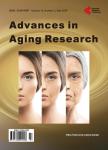Age-Associated Changes in Skeletal Muscle Regeneration: Effect of Exercise
Age-Associated Changes in Skeletal Muscle Regeneration: Effect of Exercise作者机构:Institute of Exercise Biology and Physiotherapy University of Tartu Tartu Estonia
出 版 物:《Advances in Aging Research》 (老年问题研究(英文))
年 卷 期:2015年第4卷第6期
页 面:230-241页
学科分类:1002[医学-临床医学] 100214[医学-肿瘤学] 10[医学]
主 题:Aging Muscle Damage Regeneration Exercise
摘 要:Aim of the present short review is to provide a comprehensive update on age-associated skeletal muscle damage, regeneration, and effect of endurance and resistance type of exercise training on muscle regeneration. Decrease in muscle quantity and quality leads to disability in the aging population. The degradation rate of muscle proteins during aging increased about two times, and muscle strength and motor activity decreased at the same time. Aging induced sarcopenia is a result of decreased synthesis and increased degradation of muscle proteins, which leads to the slower turnover rate of these proteins, especially contractile proteins, and this, in turn, leads to the decrease in muscle strength. Muscle damage is mainly caused by excessive strain in contracting fibre and aging muscle is particularly sensitive to it. The decreased synthesis and increased degradation rate of contractile proteins are in accordance with the increase destructive processes in muscle and lead to the decrease in the regeneration capacity and development of sarcopenia in the elderly. Exercise training increases muscle mass, oxidative capacity, contracile quality, regeneration capacity and via this, physiological functioning of skeletal muscle is improved in the elderly.



